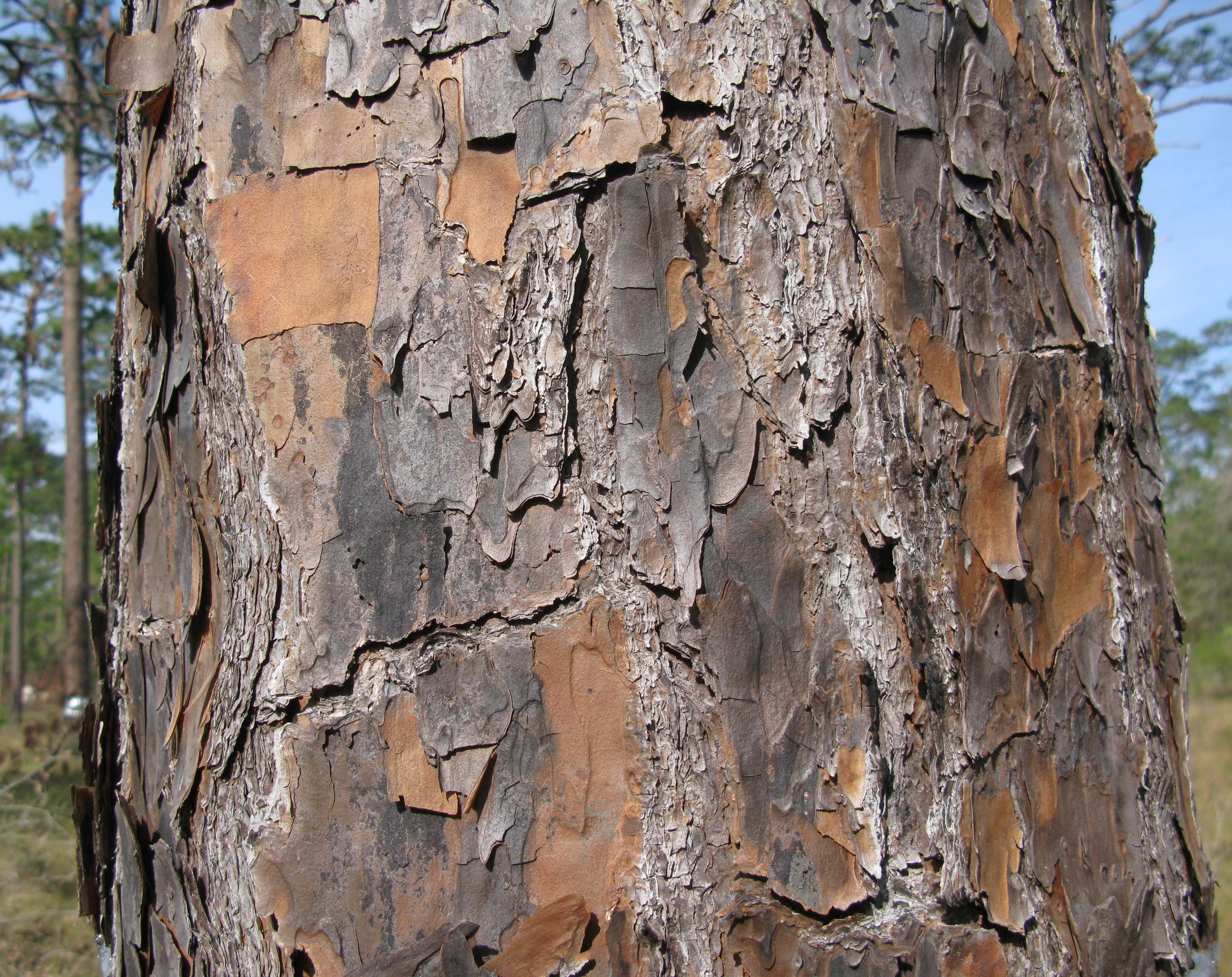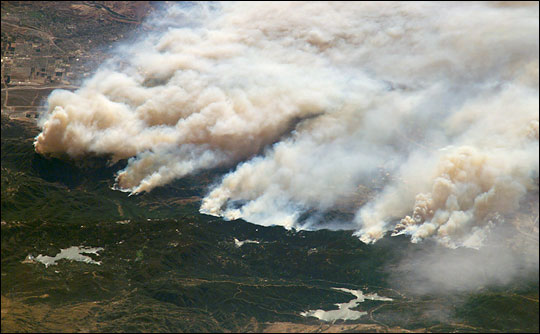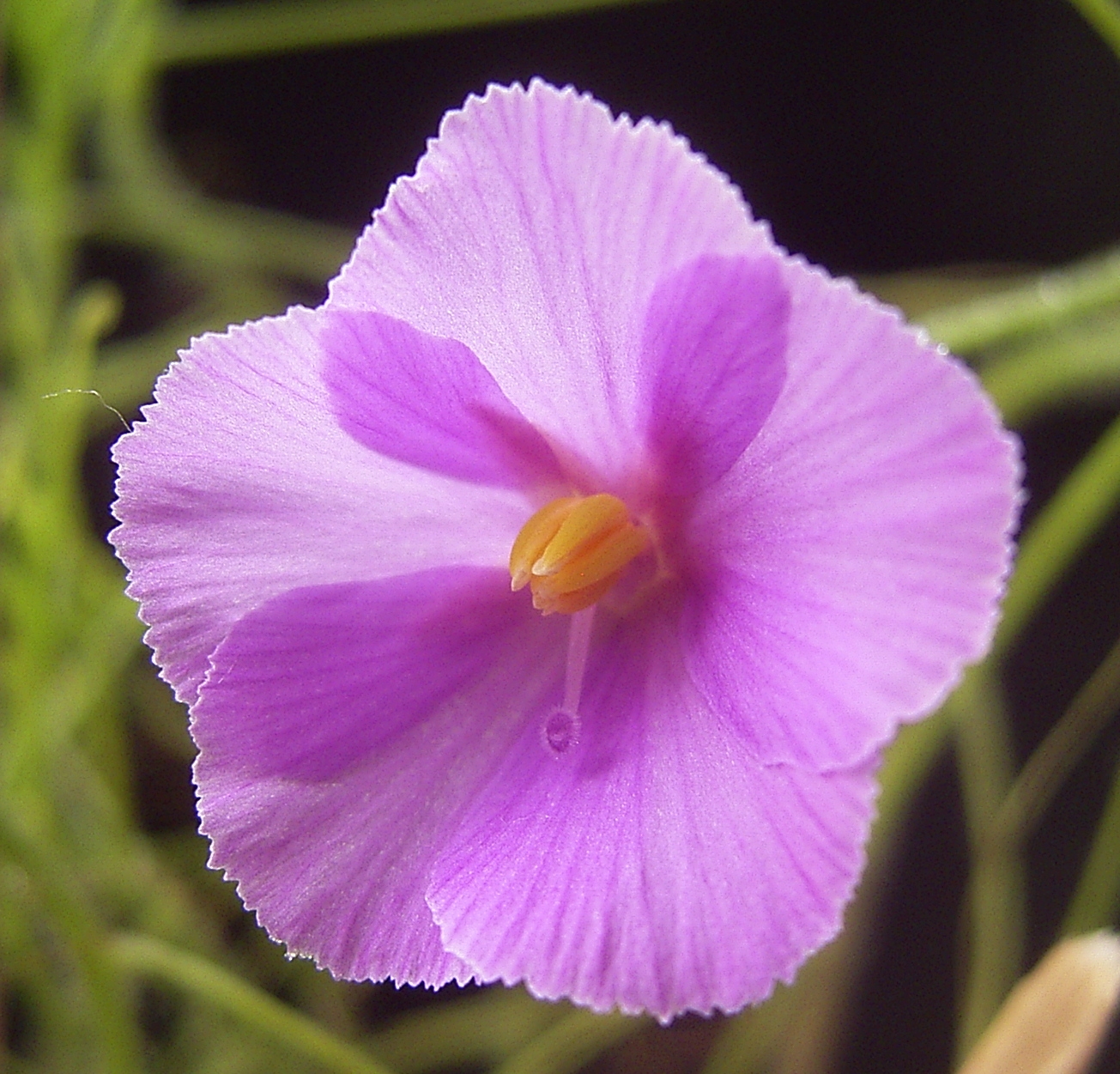|
Pyrophyte
Pyrophytes are plants which have adapted to tolerate fire. Fire acts favourably for some species. "Passive pyrophytes" resist the effects of fire, particularly when it passes over quickly, and hence can out-compete less resistant plants, which are damaged. "Active pyrophytes" have a similar competing advantage to passive pyrophytes, but they also contain volatile oils and hence encourage the incidence of fires which are beneficial to them. "Pyrophile" plants are plants which require fire in order to complete their cycle of reproduction. Passive pyrophytes These resist fire with adaptations including thick bark, tissue with high moisture content, or underground storage structures. Examples include: * Longleaf pine (''Pinus palustris'') * Giant sequoia (''Sequoiadendron giganteum'') * Coast redwood (''Sequoia sempervirens'') * Cork oak (''Quercus suber'') * Niaouli (''Melaleuca quinquenervia'') which is extending in areas where bush fires are a mode of clearing (e.g. New Caledoni ... [...More Info...] [...Related Items...] OR: [Wikipedia] [Google] [Baidu] |
Quercus Suber
''Quercus suber'', commonly called the cork oak, is a medium-sized, evergreen oak tree in the section ''Quercus'' sect. ''Cerris''. It is the primary source of cork for wine bottle stoppers and other uses, such as cork flooring and as the cores of cricket balls. It is native to southwest Europe and northwest Africa. In the Mediterranean basin the tree is an ancient species with fossil remnants dating back to the Tertiary period. It endures drought and makes little demand on the soil quality and is regarded as a defence against desertification. Cork oak forests are home to a multitude of animal and plant species. Since cork is increasingly being displaced by other materials as a bottle cap, these forests are at risk as part of the cultural landscape and animal species such as the Iberian lynx are threatened with extinction. Description General appearance and bark The cork oak grows as an evergreen tree, reaching an average height of or in rare cases up to 25 m and a tr ... [...More Info...] [...Related Items...] OR: [Wikipedia] [Google] [Baidu] |
Imperata Cylindrica
''Imperata cylindrica'' (commonly known as cogongrass or kunai grass ) is a species of Perennial plant, perennial rhizomatous grass native to tropical and subtropical Asia, Micronesia, Melanesia, Australia, Africa, and southern Europe. It has also been introduced to Latin America, the Caribbean, and the southeastern United States. It is a highly flammable pyrophyte, and can spread rapidly by colonizing disturbed areas and encouraging more frequent wildfires. Common names The species is most commonly known in English as "cogongrass", from Castilian Spanish, Spanish ''cogón'', from the Tagalog language, Tagalog and Visayan languages, Visayan ''kugon''. Other common names in English include ''kunai grass'', ''blady grass'', ''satintail'', ''spear grass'', ''sword grass'', ''thatch grass'', ''alang-alang'', ''lalang grass'', ''cotton wool grass'', and ''kura-kura'' , among other names. Description It grows from 0.6 to 3 m (2 to 10 feet) tall. The leaf, leaves are about 2& ... [...More Info...] [...Related Items...] OR: [Wikipedia] [Google] [Baidu] |
Longleaf Pine
The longleaf pine (''Pinus palustris'') is a pine species native to the Southeastern United States, found along the coastal plain from East Texas to southern Virginia, extending into northern and central Florida. In this area it is also known as "yellow pine" or "long leaf yellow pine", although it is properly just one out of a number of species termed yellow pine. It reaches a height of and a diameter of . In the past, before extensive logging, they reportedly grew to with a diameter of . The tree is a cultural symbol of the Southern United States, being the official state tree of Alabama. Contrary to popular belief, this particular species of pine is not officially the state tree of North Carolina. Description The bark is thick, reddish-brown, and scaly. The leaves are dark green and needle-like, and occur in bundles of mainly three, sometimes two or four, especially in seedlings. They often are twisted and in length. A local race of ''P. palustris'' in a cove near Rockin ... [...More Info...] [...Related Items...] OR: [Wikipedia] [Google] [Baidu] |
Plants
Plants are predominantly Photosynthesis, photosynthetic eukaryotes of the Kingdom (biology), kingdom Plantae. Historically, the plant kingdom encompassed all living things that were not animals, and included algae and fungi; however, all current definitions of Plantae exclude the fungi and some algae, as well as the prokaryotes (the archaea and bacteria). By one definition, plants form the clade Viridiplantae (Latin name for "green plants") which is sister of the Glaucophyte, Glaucophyta, and consists of the green algae and Embryophyte, Embryophyta (land plants). The latter includes the flowering plants, conifers and other gymnosperms, ferns and Fern ally, their allies, hornworts, liverworts, and mosses. Most plants are multicellular organisms. Green plants obtain most of their energy from sunlight via photosynthesis by primary chloroplasts that are derived from endosymbiosis with cyanobacteria. Their chloroplasts contain chlorophylls a and b, which gives them their green colo ... [...More Info...] [...Related Items...] OR: [Wikipedia] [Google] [Baidu] |
Lodgepole Pine
''Pinus contorta'', with the common names lodgepole pine and shore pine, and also known as twisted pine, and contorta pine, is a common tree in western North America. It is common near the ocean shore and in dry montane forests to the subalpine, but is rare in lowland rain forests. Like all pines (member species of the genus ''Pinus''), it is an evergreen conifer. Description Depending on subspecies, ''Pinus contorta'' grows as an evergreen shrub or tree. The shrub form is krummholz and is approximately high. The thin and narrow-crowned tree can grow high and achieve up to in diameter at chest height. The ''murrayana'' subspecies is the tallest. The crown is rounded and the top of the tree is flattened. In dense forests, the tree has a slim, conical crown. The formation of twin trees is common in some populations in British Columbia. The elastic branches stand upright or overhang and are difficult to break. The branches are covered with short shoots that are easy to remove. ... [...More Info...] [...Related Items...] OR: [Wikipedia] [Google] [Baidu] |
Fire Ecology
Fire ecology is a scientific discipline concerned with natural processes involving fire in an ecosystem and the ecological effects, the interactions between fire and the abiotic and biotic components of an ecosystem, and the role as an ecosystem process. Many ecosystems, particularly prairie, savanna, chaparral and coniferous forests, have evolved with fire as an essential contributor to habitat vitality and renewal. Many plant species in fire-affected environments require fire to germinate, establish, or to reproduce. Wildfire suppression not only eliminates these species, but also the animals that depend upon them. Campaigns in the United States have historically molded public opinion to believe that wildfires are always harmful to nature. This view is based on the outdated beliefs that ecosystems progress toward an equilibrium and that any disturbance, such as fire, disrupts the harmony of nature. More recent ecological research has shown, however, that fire is an integral com ... [...More Info...] [...Related Items...] OR: [Wikipedia] [Google] [Baidu] |
Papua New Guinea
Papua New Guinea (abbreviated PNG; , ; tpi, Papua Niugini; ho, Papua Niu Gini), officially the Independent State of Papua New Guinea ( tpi, Independen Stet bilong Papua Niugini; ho, Independen Stet bilong Papua Niu Gini), is a country in Oceania that comprises the eastern half of the island of New Guinea and its offshore islands in Melanesia (a region of the southwestern Pacific Ocean north of Australia). Its capital, located along its southeastern coast, is Port Moresby. The country is the world's third largest island country, with an area of . At the national level, after being ruled by three external powers since 1884, including nearly 60 years of Australian administration starting during World War I, Papua New Guinea established its sovereignty in 1975. It became an independent Commonwealth realm in 1975 with Elizabeth II as its queen. It also became a member of the Commonwealth of Nations in its own right. There are 839 known languages of Papua New Guinea, one of ... [...More Info...] [...Related Items...] OR: [Wikipedia] [Google] [Baidu] |
Byblis (plant)
''Byblis'' ( ) is a small genus of carnivorous plants, sometimes termed the rainbow plants for the attractive appearance of their mucilage-covered leaves in bright sunshine. Native to Australia and New Guinea, it is the only genus in the family Byblidaceae. The first species in the genus was described by the English botanist Richard Anthony Salisbury in 1808. Eight species are now recognized (see below). ''Byblis'' species look very similar to ''Drosera'' and ''Drosophyllum'', but are distinguished by their zygomorphic flowers, with five curved stamens off to one side of the pistil. These genera are in fact not closely related; modern classifications place ''Byblis'' in the Lamiales, while the sundews and ''Drosophyllum'' are now placed in the Caryophyllales. Plant characteristics All species of the genus form upright growth supported by a weak, fibrous root system. The genus can be divided into two groups or "complexes": The ''B. liniflora'' complex and the ''B. gigantea'' c ... [...More Info...] [...Related Items...] OR: [Wikipedia] [Google] [Baidu] |
Cistus
''Cistus'' (from the Greek ''kistos'') is a genus of flowering plants in the rockrose family Cistaceae, containing about 20 species (Ellul ''et al.'' 2002). They are perennial shrubs found on dry or rocky soils throughout the Mediterranean region, from Morocco and Portugal through to the Middle East, and also on the Canary Islands. ''Cistus'', with its many hybrids and cultivars, is commonly encountered as a garden flower. The common name rockrose (rock rose in the UK) is applied to the species, a name also shared by the related genera ''Halimium'', ''Helianthemum'' and ''Tuberaria'', all in the family Cistaceae. The common name ''gum cistus'' is applied to resin-bearing species, especially ''C. ladanifer''. Description The leaves are evergreen, opposite, simple, usually slightly rough-surfaced, 2–8 cm long. In a few species (notably ''C. ladanifer''), the leaves are coated with a highly aromatic resin called labdanum. They have showy 5-petaled flowers ranging from whit ... [...More Info...] [...Related Items...] OR: [Wikipedia] [Google] [Baidu] |
Eucalyptus
''Eucalyptus'' () is a genus of over seven hundred species of flowering trees, shrubs or mallees in the myrtle family, Myrtaceae. Along with several other genera in the tribe Eucalypteae, including '' Corymbia'', they are commonly known as eucalypts. Plants in the genus ''Eucalyptus'' have bark that is either smooth, fibrous, hard or stringy, leaves with oil glands, and sepals and petals that are fused to form a "cap" or operculum over the stamens. The fruit is a woody capsule commonly referred to as a "gumnut". Most species of ''Eucalyptus'' are native to Australia, and every state and territory has representative species. About three-quarters of Australian forests are eucalypt forests. Wildfire is a feature of the Australian landscape and many eucalypt species are adapted to fire, and resprout after fire or have seeds which survive fire. A few species are native to islands north of Australia and a smaller number are only found outside the continent. Eucalypts have been grow ... [...More Info...] [...Related Items...] OR: [Wikipedia] [Google] [Baidu] |
Pine Cone
A conifer cone (in formal botanical usage: strobilus, plural strobili) is a seed-bearing organ on gymnosperm plants. It is usually woody, ovoid to globular, including scales and bracts arranged around a central axis, especially in conifers and cycads. The cone of Pinophyta (conifer clade) contains the reproductive structures. The woody cone is the female cone, which produces seeds. The male cone, which produces pollen, is usually herbaceous and much less conspicuous even at full maturity. The name "cone" derives from Greek ''konos'' (pine cone), which also gave name to the geometric cone. The individual plates of a cone are known as ''scales''. The ''umbo'' of a conifer cone refers to the first year's growth of a seed scale on the cone, showing up as a protuberance at the end of the two-year-old scale. The male cone (microstrobilus or pollen cone) is structurally similar across all conifers, differing only in small ways (mostly in scale arrangement) from species to species. ... [...More Info...] [...Related Items...] OR: [Wikipedia] [Google] [Baidu] |
Aleppo Pine
''Pinus halepensis'', commonly known as the Aleppo pine, also known as the Jerusalem pine, is a pine native to the Mediterranean region. Description ''Pinus halepensis'' is a small to medium-sized tree, tall, with a trunk diameter up to , exceptionally up to . The bark is orange-red, thick, and deeply fissured at the base of the trunk, and thin and flaky in the upper crown. The leaves ('needles') are very slender, long, distinctly yellowish green, and produced in pairs (rarely a few in threes). The cones are narrow conic, long and broad at the base when closed, green at first, ripening glossy red-brown when 24 months old. They open slowly over the next few years, a process quickened if they are exposed to heat such as in forest fires. The cones open wide to allow the seeds to disperse. The seeds are long, with a wing, and are wind- dispersed.Nahal, I. (1962). Le Pin d'Alep (''Pinus halepensis'' Miller). Étude taxonomique, phytogéographique, écologique et sylvicole. ' ... [...More Info...] [...Related Items...] OR: [Wikipedia] [Google] [Baidu] |








